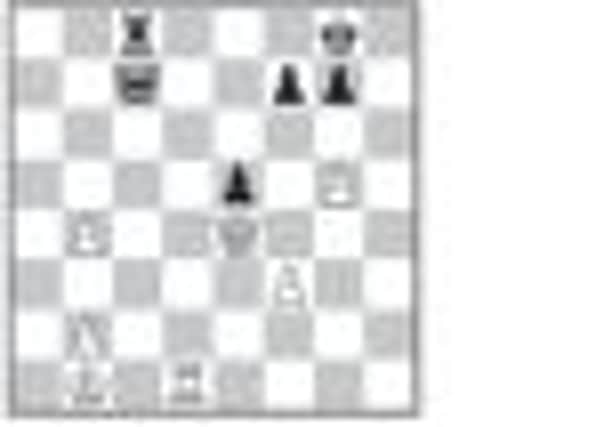Chess: How does White win?


CHESS has become quicker lately, as the game’s governing body, FIDE, experiments with ever-faster time controls with the launching of a new rating system for faster time limits that came into force on 1 January.
Time controls were first imposed in the mid-19th century because some players took forever to move, often deliberately prolonging games for more than a day. After years of experimentation, the standard allotment of time became two-and-a-half hours per player for 40 moves, and another hour for each additional 16 – this was sacrosanct at the elite level.
Advertisement
Hide AdAdvertisement
Hide AdBut in the 1990s, the rise of rapid events (between 15 to60 minutes for all the moves) came about in the belief that chess would become more attractive for sponsors, and would be seen to have more of a universal appeal by becoming a spectator sport. Certainly the first part was correct, the second perhaps not so.
Hastings is arguably the most famous chess tournament – and it had another “first” in its long history, by staging the world’s first FIDE-rated blitz tournament, which was won by Leicester’s GM Mark Hebden.
Last weekend in Tallin, Estonia, one of the first rapid events to be rated was the 21st Paul Keres Memorial.
Top seed and hot favourite, GM Alexei Shirov, successfully defended his title, but only after edging out GM Vladimir Fedoseev on tie-break. Shirov was undefeated and won three games, including the title-decider over Fedoseev.
A Shirov - V Fedoseev
XXI Paul Keres Memorial, (5)
1 e4 c5 2 Nf3 d6 3 d4 cxd4 4 Nxd4 Nf6 5 Nc3 a6 6 Be3 e6 7 Be2 Qc7 8 Qd2 b5 9 a3 Bb7 10 f3 Nc6 11 g4 h6 12 h4 Nxd4 13 Bxd4 e5 14 Be3 d5 15 Nxd5 Nxd5 16 exd5 Rd8 17 0–0–0 Rxd5 18 Bd3 Bc5 19 g5 Bxe3 20 Qxe3 Qc5 21 Qe2 hxg5 22 Be4 Rxd1+ 23 Rxd1 Bxe4 24 Qxe4 0–0 25 hxg5 Rc8 26 c3 a5 27 Kb1 b4 28 axb4 axb4 29 cxb4 Qc7 30 g6! fxg6 31 Qxg6 Qe7 32 b5 Rb8 33 Qc6 Qb4 34 Qe6+ Kf8 35 Rh1 1–0